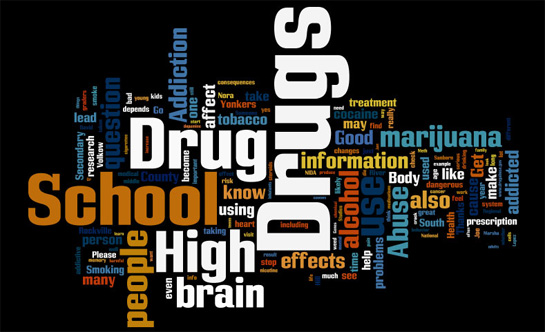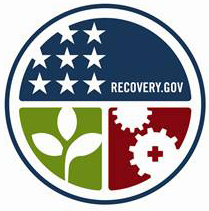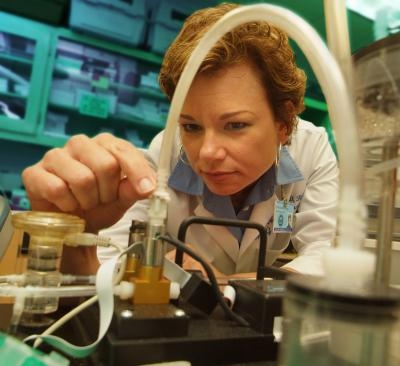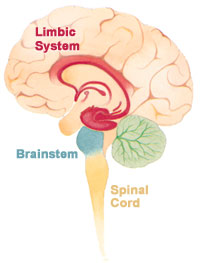NIDA Chat Day Word Cloud
What are your biggest questions about drug abuse? What words come to mind when you think about addiction?

We took the transcript from the morning session at NIDA’s 2008 Chat Day and used it to make this “word cloud![]() .” The biggest words are the words that were used most often in the conversation between teens and NIDA scientists—like drugs, school, and high. There were lots of questions about specific drugs, including marijuana, alcohol, and tobacco, and also about how to find help if you’re worried that you or a friend might have problems with drug abuse or addiction. If you look closely you can spot NIDA Director Dr. Nora Volkow, who was answering questions online with kids, and some schools that participated in Chat Day, like Rockville High in Maryland and Yonkers High in New York.
.” The biggest words are the words that were used most often in the conversation between teens and NIDA scientists—like drugs, school, and high. There were lots of questions about specific drugs, including marijuana, alcohol, and tobacco, and also about how to find help if you’re worried that you or a friend might have problems with drug abuse or addiction. If you look closely you can spot NIDA Director Dr. Nora Volkow, who was answering questions online with kids, and some schools that participated in Chat Day, like Rockville High in Maryland and Yonkers High in New York.
It’s kind of cool to see a conversation between scientists and teens all summed up in a picture like this! You can read frequently asked questions from NIDA’s Chat Day. And you can make your own word cloud pictures using any website or text at www.wordle.net![]() .
.


 Remember all the noise about the bad economy and how Congress was passing a “Stimulus Act” to help? The name of this bill is the “American Reinvestment and Recovery Act (ARRA)”. The idea is to give stimulus money to government agencies, who can then send it out around the country to save jobs or create new ones.
Remember all the noise about the bad economy and how Congress was passing a “Stimulus Act” to help? The name of this bill is the “American Reinvestment and Recovery Act (ARRA)”. The idea is to give stimulus money to government agencies, who can then send it out around the country to save jobs or create new ones.
 What can our bodies do without us even thinking about it? Lots of things, actually. And that’s what the Word of the Day is about. The Brainstem, not surprisingly, is a “stem” that connects the
What can our bodies do without us even thinking about it? Lots of things, actually. And that’s what the Word of the Day is about. The Brainstem, not surprisingly, is a “stem” that connects the  This is a guest SBB post from NIDA intern Giselle.
This is a guest SBB post from NIDA intern Giselle.
